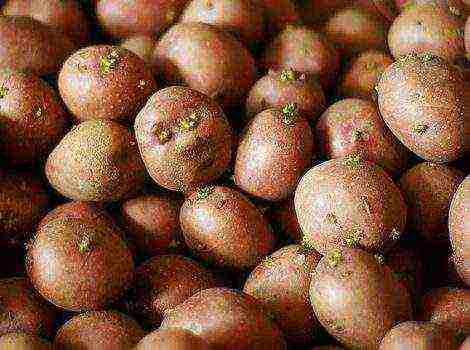Detailed description of zucchini varieties Tsukesha
Tsukesha is a zucchini zucchini with excellent taste, thin skin, and high yield. In almost every garden plot, you can find this handsome man with a gentle green, and then with a malachite skin. Connoisseurs of early vegetables choose this variety for its quick response to care, the ability to use in early salads without heat treatment.
Description and characteristics of zucchini varieties Tsukesha
An early maturing variety with an unusually beautiful skin color. While the ovary weighs up to 200 g, it is about 10-15 cm, it is used in fresh salads along with the peel.
Low astringent levels and long-term grain-free - the conditions due to which the choice is made on him. The variety is suitable for all types of storage and processing. According to the description, it is cold-resistant both at the moment of growth and for storage.
Technical ripeness comes for 40 - 50 days... Fruit weighing 700-900g... From 1 sq.m. available 12-15 kg fruits.
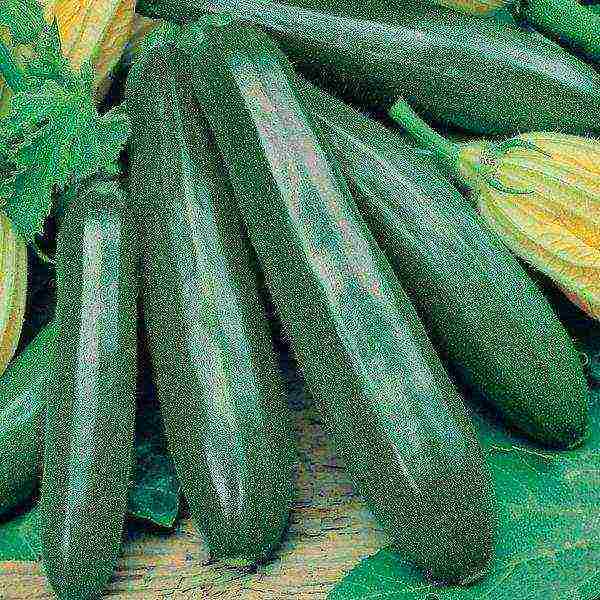
Advantages and disadvantages
The advantages can be safely attributed to all the characteristics of the variety, and take into account that for more than 15 years the choice of farms and gardeners has been falling on this variety.
The pluses include:
- High yield;
- Early maturity. This is important for replenishing early vegetables in the diet;
- Marvelous delicate taste, milk pulp, the absence of large seeds and voids in the core;
- Undemanding to the soil;
- High portability;
- Shelf life up to 7-8 months in the storage;
- High germination;
- The ability to use in all types of storage and processing.
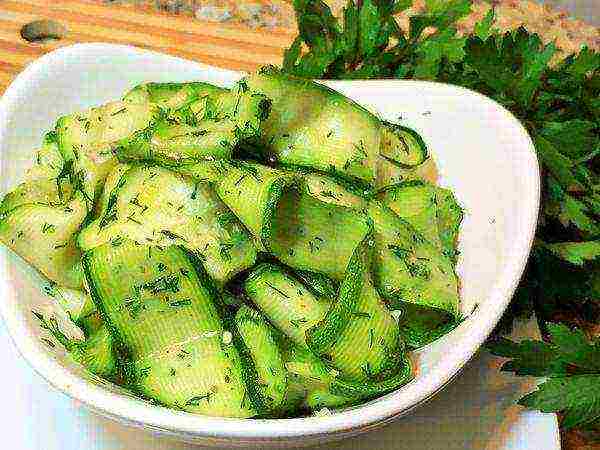
The disadvantages of this variety are minimal, and almost invisible in relation to the advantages:
- Demanding to watering and sunlight;
- It is difficult to transfer a transplant, and therefore it is better to sow seeds directly into the ground and cover.
Seed preparation
You will not have any difficulties with planting seeds for sure. There are two options, and both are quite viable.
Landing in the ground
After a month and a half, and sometimes even earlier, you will get excellent small ovaries up to 15 cm in size.
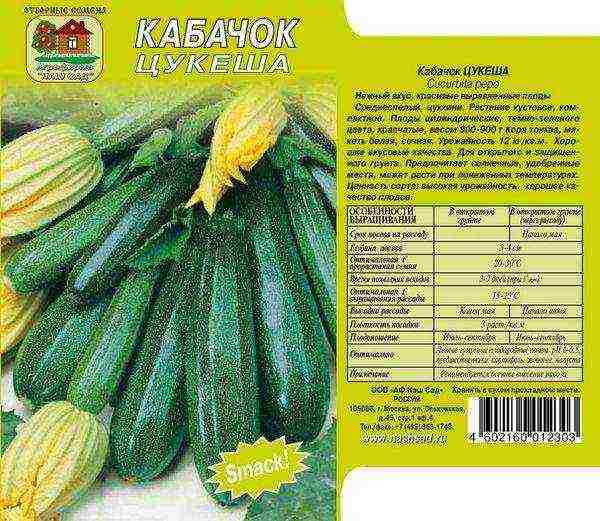
- Prepare high bed, it is better to organize a small greenhouse, inside which you can put the spring compost mixed with manure.
- On top, on manure, pour not less than 30 cm... Spill the earth over the entire bed with warm water and cover with foil.
- In a day, when you see that the bed has finished hovering, immerse your hand 20 cm. in the garden. If the ground is lukewarm but not hot, you can start sowing.
If the temperature inside the bed is above 15 degrees, or you cannot determine it with accuracy, do not rush to plant. The land should be approximately like fresh milk.
Seedlings in pots
If you want to collect fresh zucchini for delicate vitamin salads already in June, you should start planting in April... To do this, it is better to use peat pots, with which you will plant the seedlings in the ground.
When planting seeds, you should not add fertilizer, otherwise the seedlings will be thin, they will stretch and there will be few ovaries.
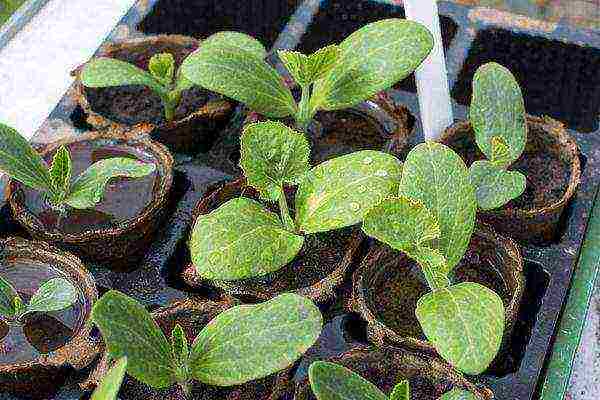
Landing technology
If you prefer to sow seeds with seedlings for an early harvest, this option will work:
- Soak the seeds on cheesecloth for three o'clock in warm water.
- Fill the pots with earth.
- Dampen the ground with warm water.
- Sow a seed no deeper than 2 cm.
- Cover the pots with plastic wrap.
- When planting seedlings in the ground, be sure to spill the holes with enough water - this way the peat pots will dissolve faster and allow the roots to grow.
- After placing the pots in the holes, sprinkle with earth, press down on the roots and sprinkle again with water.
- Necessarily cover the seedlings with covering material, otherwise direct sunlight will burn the leaves, and the plant will recover for a long time.
If you sow directly into the ground, late April - early May it is better to choose a natural greenhouse using compost and manure.
- After the bed has stopped "burning", open the film
- Loosen the top layer of the earth, do pits 2 - 3 cm deep.
- Sow soaked seeds from a distance 20 * 30cm apart... This will be enough, since the variety grows a lash, does not form several lashes from the root.
- Water the plantings and cover with plastic wrap. Do not open until germination occurs.
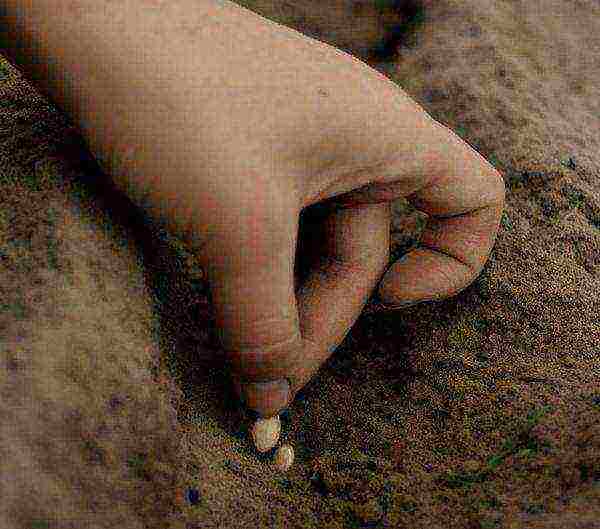
Care
As soon as shoots appear, it is necessary open the film and ventilate the greenhouse or garden during the day. Watering in the first week is necessary a little and often - the ground should not be dry.
The soil around the sprouts should not be allowed to harden and become crusty. It is necessary to loosen as soon as an earthen crust is formed.
During the beginning of flowering, it is necessary to carefully shed a garden water, and immediately after that fertilize with fresh, infused manure diluted in water for a day at the rate of about 1 kg. for 10 liters of water.
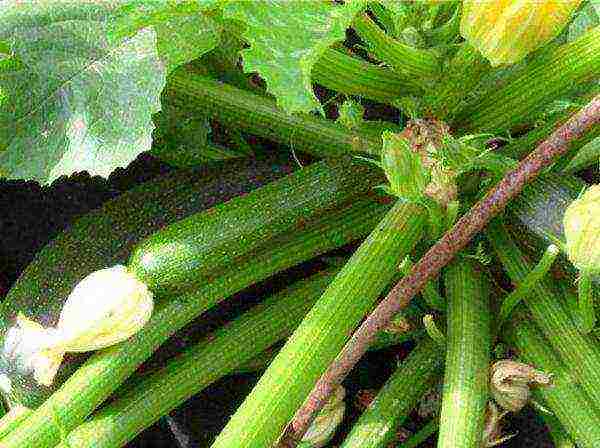
Diseases and prevention
Tsukesha very hardy to various kinds of diseases, and if you take proper care of the plant, it may not let you know about any problems throughout the summer.
With the onset of cool nights and morning dew, the leaves may deteriorate, but this does not affect the quality of the fruit. Do not overdo it with fertilization and the introduction of compost and manure - thanks to such fertilizing, the plant begins to increase the growth of foliage, and the fruits are tied in smaller quantities.
Harvesting and storage
You can start harvesting with the first small fruits, and from July you need to visit the garden at least once every 3 days... Do not miss the moment when the zucchini begins to feed in width and form voids with seeds inside.
Mature zucchini reaches weight up to 1 kg, and length up to 30 cm... When stored in a dark room with a temperature not higher than 15 degrees, and not lower than 7, vegetables winter well for 5-6 months.
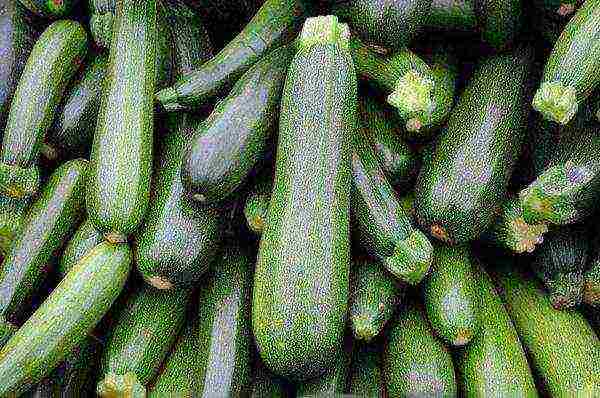
You can store unripe zucchini in a cool place or in the refrigerator no more than a month... If you wrap them in newspaper or parchment with air access, then you can keep them in the refrigerator for 1.5 months.
Canning, cooking caviar and salads for the winter is common among amateurs. The variety is excellent in processing, as it has a thin and soft skin, light structure and very small seeds.
Tsukesha is suitable for any region and will allow even novice gardeners to feel like experienced, experienced farmers. The main thing is to have time to harvest.


